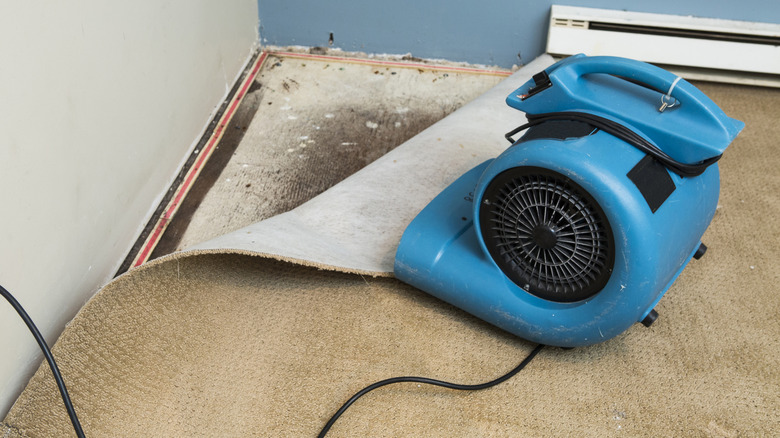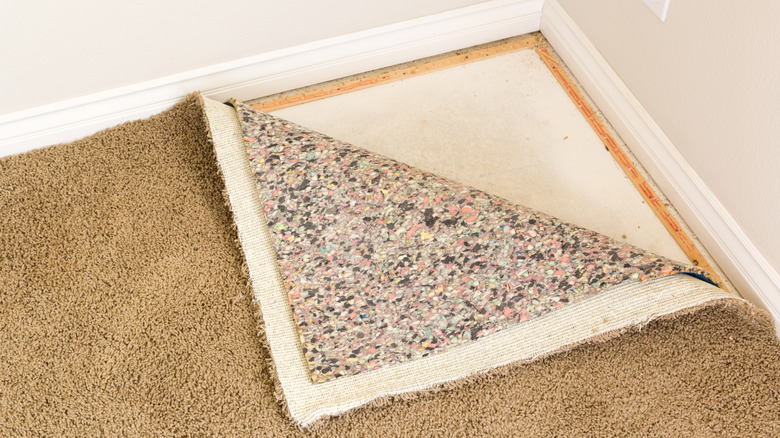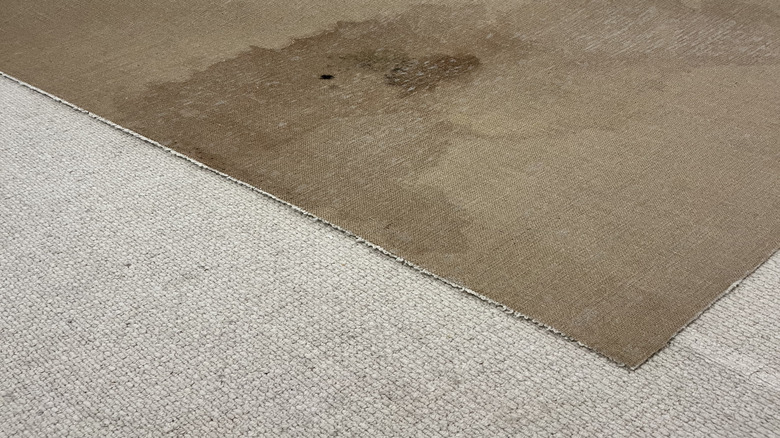The Best Way To Dry Wet Carpet To Prevent Water Damage
We may receive a commission on purchases made from links.
There's nothing worse than hearing a squishing or sloshing sound underneath your feet while walking on your carpet. Not only is wet carpet hard to clean up, but it can also lead to water damage that creates mold or impacts your home's appearance.
Nobody wants to deal with the hassle of repairing water damage in their home, so it's important to know the signs of water damage like dampness, carpet discoloration, stains on a wall or ceiling, and carpet wrinkling. Excessive water can also lead to mold and rotting. In fact, the longer a wet carpet sits, the more likely it is to grow mold which can occur as quickly as 48 hours after it gets wet.
Whether the cause is a leaky pipe or a hardcore spill, tackle the problem right away and use every tool at your disposal to remove the water. These can include towels, fans, dehumidifiers, absorbent materials like baking soda, and a wet vac if you have one.
Before you begin the cleanup, though, you should remove any furniture or other items in the way. The amount of water will help you determine what tools you'll need to clean up the mess. For lots of wetness or flooding, you'll want a wet vac to help out, but for a spill, towels might be enough to handle the situation.
Finally, if a leaky pipe or roof has caused the issue, you'll want to make sure the problem has been identified and fixed. You don't want your efforts to go to waste.
How to dry a wet carpet
First, if possible, pull back the carpet in the area to check the status of the padding. If it's slightly damp, dry it using the same process as the carpet; if it's soaked through, it may need to be replaced. Padding absorbs water easily and is very hard to dry so if you notice your padding is completely soaked through to the underside, it's best to remove the whole thing rather than risk it growing mold.
On the other hand, if the carpet is very wet, you can use a wet vacuum to suck up the majority of the water. If you don't have one, they're probably available to rent from your local hardware store.
If your carpet isn't completely soaked through, using plenty of towels may be enough to remove most of the liquid. Lay a towel flat over the wet area and gently scrub back and forth (do not stand or walk on it), then repeat once the towel is soaked through.
As you are doing this, be sure to open windows and turn on the air conditioner; the increased airflow will help the carpet to dry faster. If opening your windows isn't an option due to the weather, try placing multiple fans on the floor to circulate air throughout the room.
How to check for water damage
If you've used a wet vacuum, safely discard the water. Then, use any fans you have on hand to blow air on the area. If you have a dehumidifier, place it near the area to deal with any excess humidity (again, these may be rented if you don't have one). Move your fans around often to work on different parts of the carpet.
Once most of the moisture is gone, you can use baking soda to absorb the rest; simply apply it liberally over the area, leave it for 24 hours, and vacuum it up.
If you suspect your floor might be water-damaged, you'll want to test it for mold and rot. If you discover a small amount of mold, it may be possible to treat the situation yourself with a product like ZORBX Extra Strength Mold & Mildew Remover. However, if there are more than a few small spots, it's best to get it treated by a professional as soon as possible to prevent it from spreading further.


